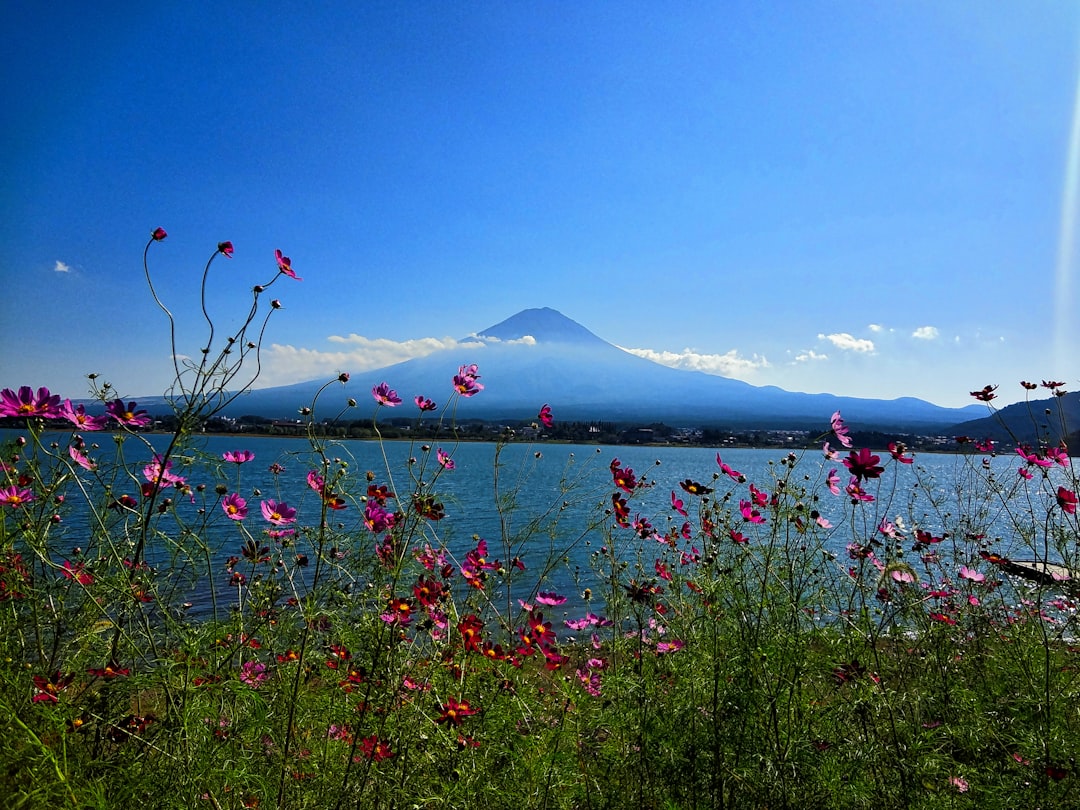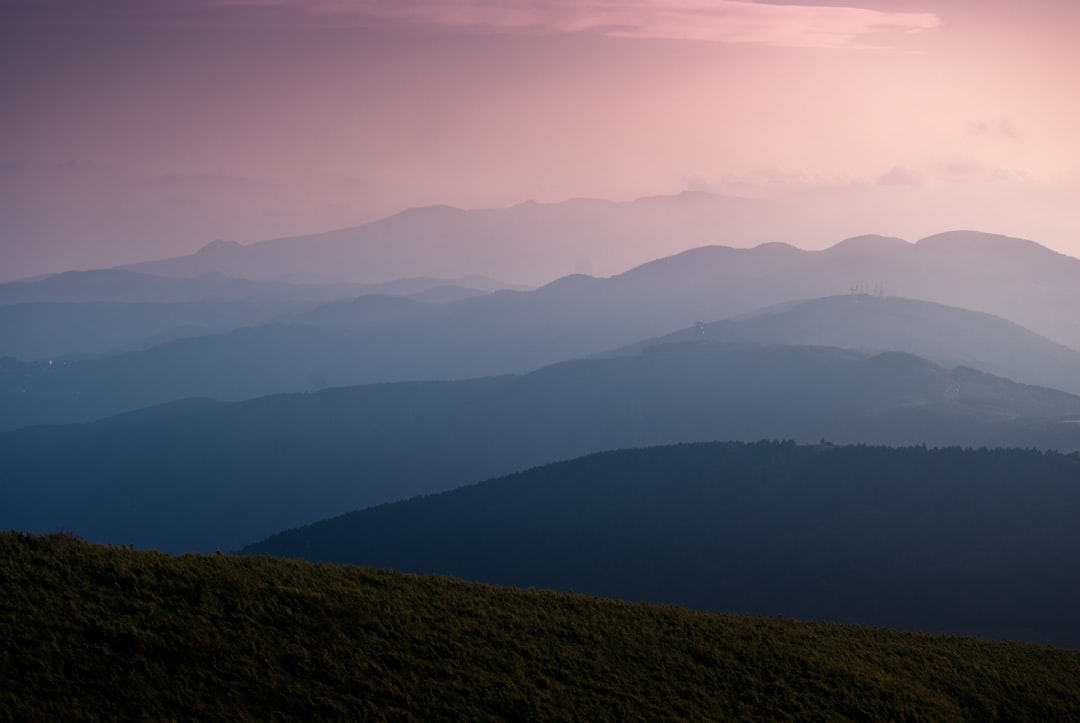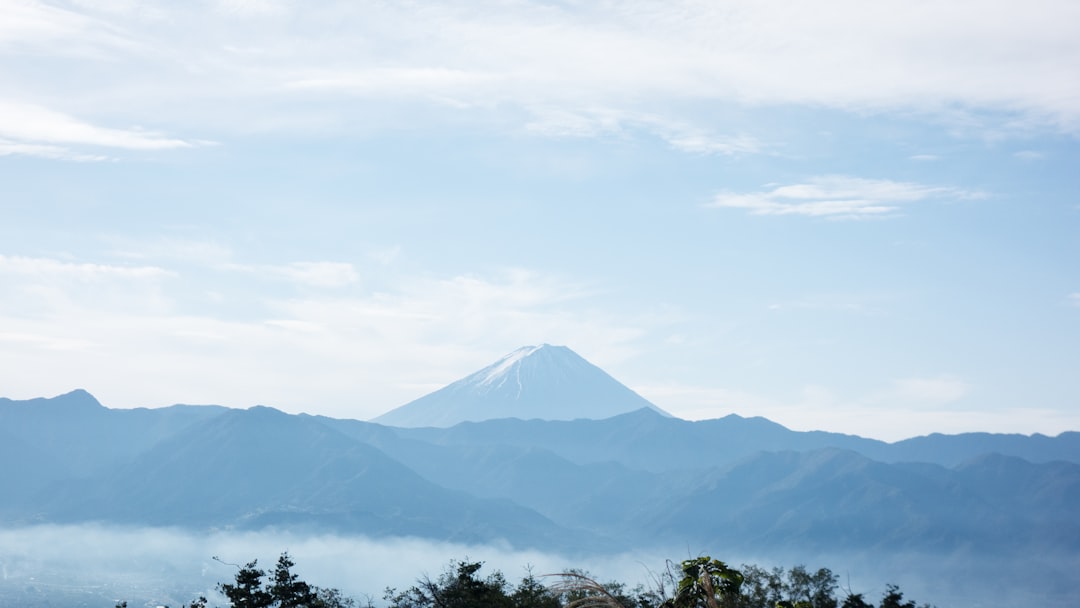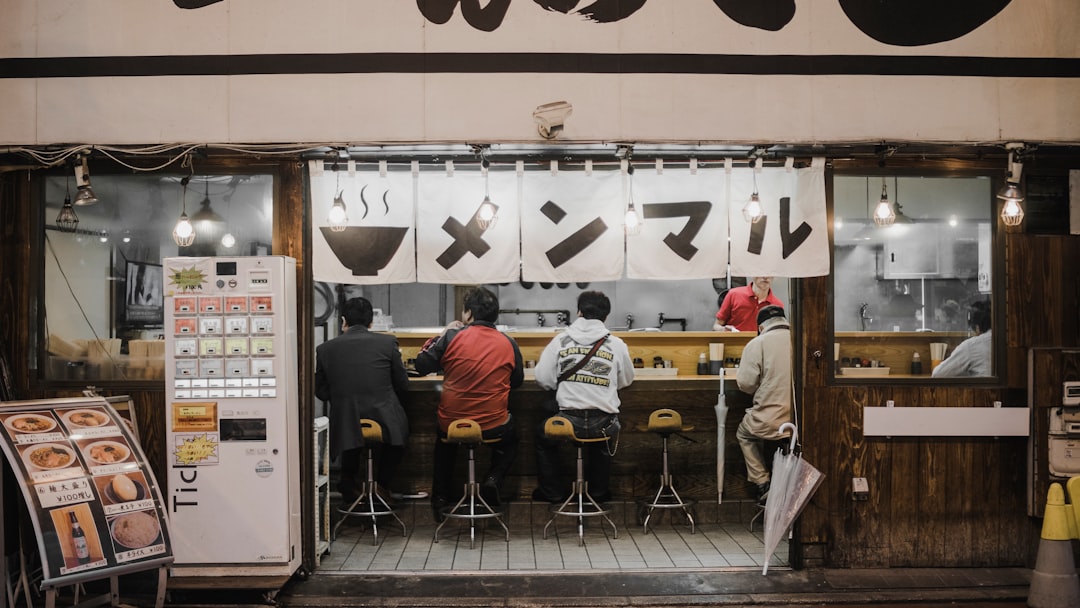A Journey Through Japan's Poetic Landscapes 7 Cities that Inspire Haiku
A Journey Through Japan's Poetic Landscapes 7 Cities that Inspire Haiku - 7 Cities that Inspire Haiku" :
7 Cities that Inspire Haiku
Japan's rich poetic heritage is showcased in the seven cities highlighted in this insightful article. From the traditional cultural hub of Kyoto to the modern dynamism of Tokyo, each destination offers a unique canvas for haiku poets to capture the essence of the country's seasonal beauty and deep-rooted traditions. Beyond the well-known urban centers, cities like Matsuyama, Kanazawa, and Hirosaki provide a more intimate glimpse into Japan's poetic landscapes, where the timeless art of haiku continues to thrive and evolve. This journey through Japan's poetic landscapes promises to inspire both seasoned haiku enthusiasts and those seeking to immerse themselves in the country's captivating literary traditions.
Matsuo Basho, considered the "father of haiku," lived in the 17th century and made significant contributions to the haiku form, which captures a single moment in time and invites readers to reflect on the interconnectedness of all things.
Haiku has a lineage dating back to the tanka poetry of the Heian period (794-1185) in Japan, long before the 17th-century introduction of the distinct 5-7-5 syllable structure popularized by Basho.
Kamakura, a coastal city near Tokyo, is home to the iconic Great Buddha statue, and its scenic bamboo groves and historical sites have provided ample inspiration for haiku poets over the centuries.
Kanazawa, known for its well-preserved Edo-era districts and traditional crafts, offers haiku enthusiasts a wealth of inspiration in the form of its seasonal beauty, particularly the blooming of cherry blossoms and azaleas.
A Journey Through Japan's Poetic Landscapes 7 Cities that Inspire Haiku - Kanazawa: Embracing Tradition in a Modern Era
Kanazawa, a captivating city in Japan, seamlessly blends its rich historical heritage with a vibrant modern era. Known for its well-preserved Edo-period architecture, traditional culture, and one of the country's top gardens, Kenroku-en, Kanazawa offers travelers a unique experience that celebrates both the past and the present. The city's diverse array of attractions, from ancient samurai houses to contemporary art museums, invites visitors to immerse themselves in the harmonious coexistence of tradition and modernity.
Kanazawa is home to one of the "Three Great Gardens of Japan," the stunning Kenroku-en, which features over 8,000 trees and 183 different species, meticulously maintained since the 17th century.
The city produces an astounding 99% of Japan's gold leaf, a craft that dates back to the Edo period, showcasing Kanazawa's mastery of traditional techniques and its enduring legacy as a center of artisanal excellence.
Kanazawa's historic Higashi Chaya District is one of the best-preserved examples of Edo-era architecture in the country, with over 20 remaining tea houses and geisha houses that offer a glimpse into the city's rich cultural heritage.
The D.T.
Kanazawa is home to the Ishiura Jinja Shrine, a Shinto shrine notable for its unique architecture that incorporates both traditional Japanese and European influences, reflecting the city's openness to global cultural exchange.
A Journey Through Japan's Poetic Landscapes 7 Cities that Inspire Haiku - Matsue: Lakeside Serenity and Literary Legacy
Matsue, a city in Japan's Shimane Prefecture, is renowned for its serene lakeside setting and rich literary heritage. The city's cultural tapestry is deeply influenced by the works of renowned haiku poet Matsuo Basho, who found inspiration in Matsue's natural beauty. Visitors can explore the former residence of Irish author Lafcadio Hearn, who lived in Matsue and was captivated by the city's charming old town, historic castle, and traditional temples. Matsue's enduring connection to Japan's poetic landscapes continues to draw travelers seeking a deeper appreciation of the country's cultural treasures.
Matsue is home to one of the few remaining original castles in Japan, the Matsue Castle, which dates back to the 17th century.
The castle's distinct black color and well-preserved wooden structures make it a unique architectural marvel.
Matsue is the former home of Lafcadio Hearn, an Irish author who lived in the city for a year and was deeply influenced by its cultural and natural landscapes, which he later incorporated into his literary works.
The Yaegaki Shrine in Matsue is dedicated to the mythical kami (deities) Susanoo and Kushinada, and features a haiku museum showcasing the life and works of Matsuo Basho.
The city's natural beauty, with its picturesque lakes, rivers, and surrounding mountains, offers ample opportunities for outdoor enthusiasts to engage in hiking, photography, and other leisure activities.
A Journey Through Japan's Poetic Landscapes 7 Cities that Inspire Haiku - Kyoto: Ancient Temples, Timeless Haiku
Kyoto, the cultural heart of Japan, is renowned for its ancient temples and timeless haiku poetry. The city's tranquil landscapes and spiritual heritage have inspired generations of poets, including the revered haiku master Matsuo Basho. Visitors can explore iconic temples like Kiyomizudera and Ryoanji, which have served as muses for countless haiku compositions reflecting the fleeting beauty of nature and the human experience. Kyoto's rich poetic legacy continues to captivate travelers seeking to immerse themselves in Japan's timeless artistic traditions.
Kyoto, the former imperial capital of Japan, boasts over 1,600 Buddhist temples and 400 Shinto shrines, making it a veritable treasure trove of ancient spiritual sites.
The Fushimi Inari-taisha Shrine, with its iconic vermilion torii gates, is one of the most photographed locations in Kyoto and has been featured in numerous films, including the 2005 hit "Memoirs of a Geisha."
Kinkakuji, also known as the "Golden Pavilion," is a Zen temple whose top two floors are completely covered in gold leaf, creating a stunning visual contrast against the lush surrounding gardens.
Ryoanji, a Zen temple famous for its rock garden, is considered one of the finest examples of the Karesansui (dry landscape) style, where carefully arranged rocks and raked gravel create a meditative, minimalist landscape.
The Arashiyama Bamboo Grove, located on the outskirts of Kyoto, is a serene and otherworldly natural landscape, where towering bamboo stalks sway in the breeze, creating a tranquil and meditative atmosphere.
Matsuo Basho, one of the most revered haiku poets in Japanese history, found inspiration in Kyoto's landscapes, with many of his most famous works, such as "The Narrow Road to the Deep North," set within the city's confines.
The Nijo Castle, a UNESCO World Heritage Site, features the Ninomaru Palace, whose squeaky "nightingale floors" were designed to alert guards to potential intruders, a testament to the engineering ingenuity of the time.
Kyoto's annual Gion Matsuri festival, one of the most famous in Japan, features a grand parade of elaborately decorated floats, known as "yamahoko," that showcase the city's rich cultural heritage and craftsmanship.
A Journey Through Japan's Poetic Landscapes 7 Cities that Inspire Haiku - Tokyo: Urban Rhythms in 17 Syllables
Tokyo, Japan's bustling capital, is known for its intricate urban rhythms, where commuters make an astounding 635 million daily train journeys. Amidst this dynamic landscape, the ancient art of haiku poetry thrives, capturing fleeting moments and evoking deep emotions through the elegant constraints of 17 syllables. This traditional Japanese verse form, with its origins in Zen Buddhism, has transcended linguistic barriers and inspired poets and writers worldwide to explore the interplay between the natural and the urban.
Tokyo's subway system transports an astonishing 7 million passengers daily, making it the world's busiest urban rail network.
The average Japanese commuter spends 1 hour and 12 minutes per day on their commute, one of the longest in the developed world.
Tokyo's iconic Shibuya Crossing sees an estimated 2,500 pedestrians cross the intersection at peak times, a mesmerizing display of urban choreography.
The Tokyo Metropolitan Government Building, at 243 meters tall, is one of the tallest skyscrapers in the city and features two observation decks offering panoramic views.
The Tsukiji Fish Market, once the world's largest, processes an astounding 500 tons of seafood per day, with the famous tuna auctions drawing global attention.
Tokyo is home to over 200 Michelin-starred restaurants, the highest concentration of any city in the world, reflecting the culinary prowess of the capital.
The Tokyo Skytree, standing at 634 meters, is the tallest free-standing tower in the world, offering visitors breathtaking vistas of the city skyline.
Tokyo's Shinkansen (bullet train) network operates at speeds of up to 320 km/h, enabling rapid intercity travel and connecting the capital to other major Japanese cities.
The city's Sensoji Temple, one of the oldest and most significant Buddhist temples in Japan, attracts over 30 million visitors annually, making it one of the most popular tourist destinations.
A Journey Through Japan's Poetic Landscapes 7 Cities that Inspire Haiku - Matsuyama: Hot Springs and Cultural Heritage
Matsuyama, the capital of Ehime Prefecture, is a city steeped in history and cultural heritage. Renowned for its legendary Dogo Onsen, one of Japan's oldest hot spring retreats, Matsuyama also boasts the impressive Matsuyama Castle, a symbol of the city's rich past. The city's literary connections, particularly its association with haiku poet Masaoka Shiki, add a poetic dimension to the Matsuyama experience. With a range of cultural attractions and natural wonders, Matsuyama offers visitors a well-rounded journey through Japan's timeless landscapes and traditions.
Dogo Onsen, located in Matsuyama, is considered the oldest hot spring resort in Japan, with a history dating back over 3,000 years.
It has been a popular destination for the Japanese aristocracy for centuries.
Masaoka Shiki, the father of modern haiku, was born in Matsuyama and is celebrated throughout the city, with numerous haiku-themed attractions, including the Shiki Museum and haiku post boxes.
The Dogo Onsen area is home to over 100 ryokans (traditional Japanese inns), some of which have been in operation for over 200 years, offering visitors a glimpse into Japan's rich history and culture.
The Matsuyama Castle ropeway, one of the steepest in Japan, offers visitors a unique and thrilling way to reach the castle's summit, providing breathtaking views of the city and the Seto Inland Sea.
Matsuyama is home to a number of Important Cultural Properties, including the Bansuisō Villa, a stunning example of Meiji-era architecture and one of the largest private residences in the city.
The Live Earth Matsuyama festival, held annually in the city, celebrates music, environmental activism, and ethnic cuisine, showcasing Matsuyama's diverse cultural offerings.
The city's haiku post boxes, located throughout the city, allow visitors to leave their own haiku poems, contributing to the city's rich literary heritage and creating a unique interactive experience.
Matsuyama is a convenient destination for visitors, with most of the city's major attractions located near Matsuyama Station and the Dogo Onsen area, making it easy to explore the city's cultural and historical sites in a single day.
The Dogo Onsen area is known for its unique architectural style, with many of the historic ryokans and bathhouses featuring intricate wooden structures and intricate design elements that have been maintained for centuries.
A Journey Through Japan's Poetic Landscapes 7 Cities that Inspire Haiku - Sendai: Nature's Embrace in Tohoku
Sendai, the largest city in Tohoku, has recovered from the 2011 earthquake and now offers visitors a blend of natural beauty and vibrant cultural traditions. The city's strong connection to haiku poetry is reflected in its designation as a "city of haiku," making it a must-visit destination for those interested in exploring Japan's poetic landscapes. Despite its modernity, Sendai remains deeply rooted in its natural surroundings, earning it the moniker "Nature's Embrace."
Sendai is home to the Sendai Daikannon, a massive 100-meter-tall statue of the Goddess of Mercy, one of the tallest statues in Japan.
The city's Aobayama Park contains a unique geological feature known as the "Hole in the Hill," a natural cavity formed by erosion over thousands of years.
Sendai is the birthplace of the Tanabata Festival, a vibrant celebration of the annual meeting of the celestial lovers Orihime and Hikoboshi, as depicted in ancient Japanese folklore.
Sendai's Zuihoden Mausoleum, the final resting place of the powerful feudal lord Date Masamune, features intricate architectural details and ornate carvings that showcase the region's rich cultural heritage.
The Sendai Astronomical Observatory, established in 1931, is one of the largest and most advanced observatories in Japan, offering visitors the opportunity to gaze at the stars and planets.
Sendai is home to the Sendai Pageant of Starlight, a dazzling annual illumination event that transforms the city's streets and landmarks into a mesmerizing display of lights.
The Sakunami Onsen, a hot spring resort within Sendai's city limits, is known for its therapeutic waters that are said to have healing properties.
Sendai's Tohoku University, one of Japan's most prestigious research institutions, has played a significant role in the development of medical imaging technology, including the invention of the world's first practical MRI machine.
The Sendai Suikinkutsu, a unique sound installation in the city's Kaizan-ji Temple, creates a mesmerizing and meditative audio experience by channeling the flow of water through a hidden underground chamber.
A Journey Through Japan's Poetic Landscapes 7 Cities that Inspire Haiku - Sapporo: Hokkaido's Poetic Wilderness
Sapporo, the capital of Hokkaido, is a unique blend of urban charm and natural wonders. The city's rich cultural heritage is showcased through its museums, galleries, and festivals, offering visitors a glimpse into Japan's poetic landscapes. From the historic Sapporo Clock Tower to the tranquil Sapporo Art Park, Sapporo provides a diverse range of experiences that inspire creativity and appreciation for the region's literary traditions.
Sapporo is the fifth-largest city in Japan, located on the northern island of Hokkaido, known for its unique blend of Japanese and Western influences.
The Sapporo Clock Tower, a historic landmark built in 1878, is one of the city's most iconic structures and a testament to its architectural heritage.
The Sapporo Snow Festival, held annually since 1950, transforms the city into a winter wonderland, showcasing intricate snow and ice sculptures that attract millions of visitors.
Sapporo is home to the Hokkaido University Botanic Garden, a lush oasis that boasts over 4,300 species of plants, including rare and endangered species.
The Sapporo Beer Museum, the oldest beer museum in Japan, offers visitors a glimpse into the history and production of the famous Sapporo Beer, a local favorite since
Sapporo is the birthplace of miso ramen, a unique regional variation of the popular Japanese noodle dish, known for its rich, creamy broth and thick, chewy noodles.
The Ainu, the indigenous people of Hokkaido, have a rich cultural heritage that is celebrated in the Upopoy National Ainu Museum and Park, located just outside of Sapporo.
The Sapporo Dome, a state-of-the-art indoor stadium, is the home of the Hokkaido Nippon-Ham Fighters baseball team and has hosted major international sporting events, including the 2002 FIFA World Cup.
Sapporo is known for its high-quality dairy products, including the famous Hokkaido milk, which is prized for its rich, creamy texture and unique flavor profile.
The city is home to the Sapporo Teine Ski Resort, a popular winter destination that has hosted multiple Winter Olympic events, including the 1972 Winter Olympics.
Sapporo's Tanukikoji Shopping Street, a historic covered shopping arcade, offers a unique shopping experience, with a mix of traditional Japanese shops and modern boutiques.



